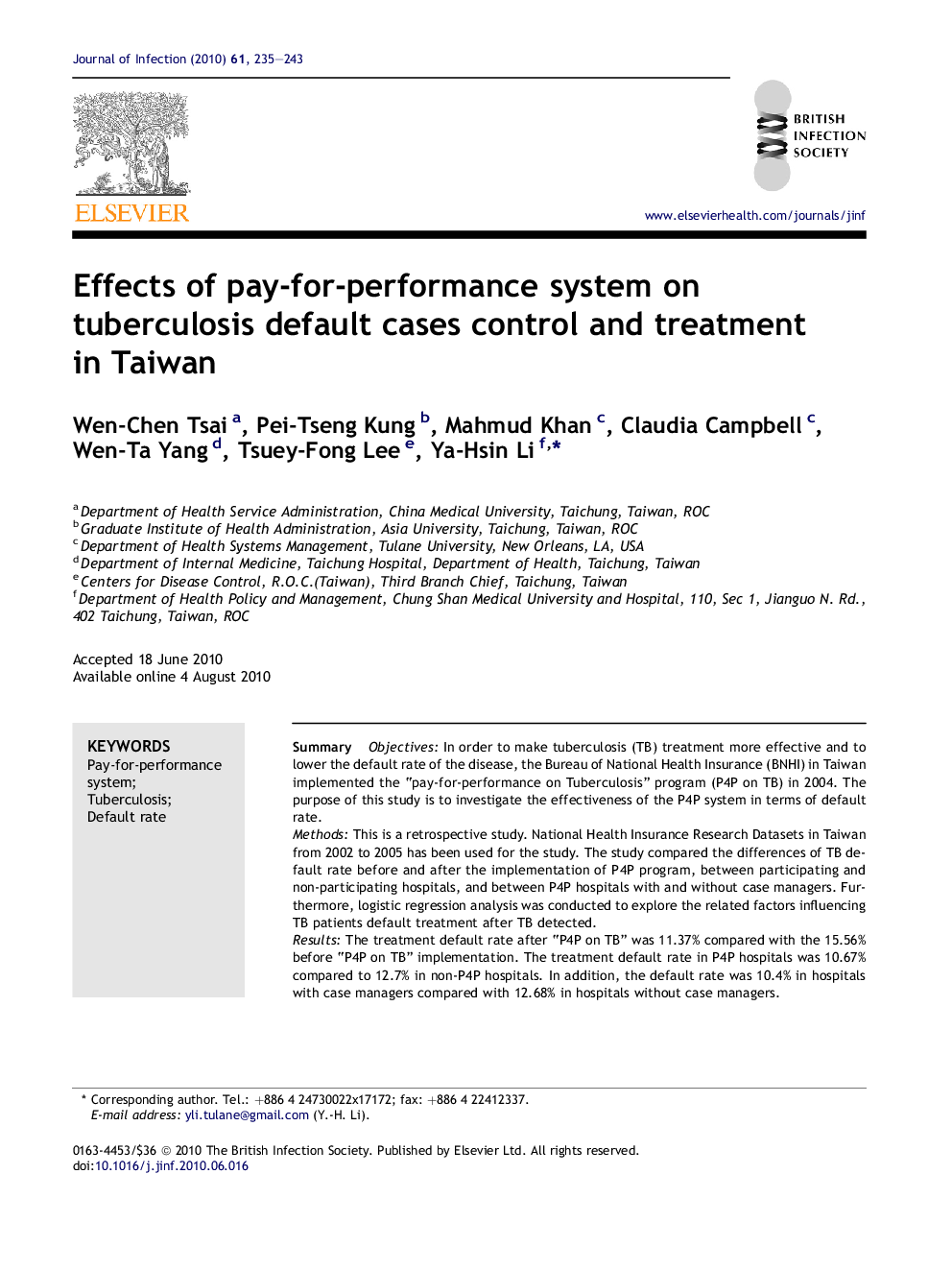| Article ID | Journal | Published Year | Pages | File Type |
|---|---|---|---|---|
| 3375671 | Journal of Infection | 2010 | 9 Pages |
SummaryObjectivesIn order to make tuberculosis (TB) treatment more effective and to lower the default rate of the disease, the Bureau of National Health Insurance (BNHI) in Taiwan implemented the “pay-for-performance on Tuberculosis” program (P4P on TB) in 2004. The purpose of this study is to investigate the effectiveness of the P4P system in terms of default rate.MethodsThis is a retrospective study. National Health Insurance Research Datasets in Taiwan from 2002 to 2005 has been used for the study. The study compared the differences of TB default rate before and after the implementation of P4P program, between participating and non-participating hospitals, and between P4P hospitals with and without case managers. Furthermore, logistic regression analysis was conducted to explore the related factors influencing TB patients default treatment after TB detected.ResultsThe treatment default rate after “P4P on TB” was 11.37% compared with the 15.56% before “P4P on TB” implementation. The treatment default rate in P4P hospitals was 10.67% compared to 12.7% in non-P4P hospitals. In addition, the default rate was 10.4% in hospitals with case managers compared with 12.68% in hospitals without case managers.ConclusionsThe results of the study showed that “P4P on TB” program improved the treatment default rate for TB patients. In addition, case managers improved the treatment outcome in controlling patients’ default rate.
